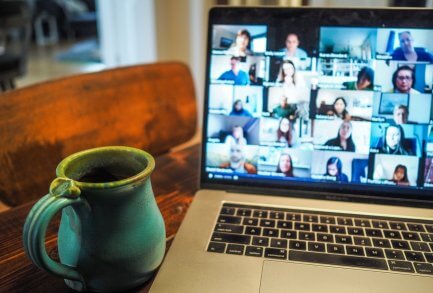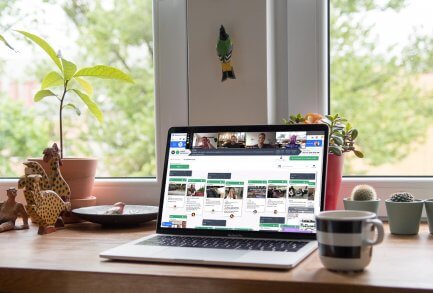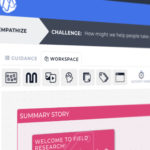Building Sprintbase: 4 mistakes we made and what we learned
There are a huge number of good decisions that inform a business going where you want it to go. But, along the way, there are always going to be a fair number of mistakes that inform how you get there.
That’s definitely true with Sprintbase. When I think about how the platform came to be as it is today, I realise what a huge role trial and error has played.
So, in the spirit of celebrating what an important part of any journey tripping up, learning and adjusting can be, I thought I’d share some of the mistakes we’ve made during the last few years, and what we’ve learned from them:
1. Assuming that we should try to replicate face-to-face experiences online
At first we thought that what we needed to do was recreate in-person workshops, but just run them virtually. We were wrong about that.
We soon discovered that the trick to creating great virtual innovation workshops and projects is to stop trying to recreate in-person experiences, and instead focus on maximising the unique advantages of a remote setting. These include:
- The opportunity to involve all the right people
- The chance to make the most of group and individual creativity
- The ability to hold everybody to account
- The fact that you can share feedback and iterate more quickly
- The immediate, more tangible, actionable output you get
Working remotely brings a flexibility which isn’t possible in an in-person experience. Introverts have the space to make their voices heard, everybody has more time to reflect in their own time, people can flex when they contribute around their lives, and there’s space for a much greater diversity of contributions.
As soon as we started embracing the unique elements of going virtual, we started offering virtual experiences which could help organizations bring about real, transformational change.
I’ve written in more detail on this subject, if you’d like to read more.
2. Assuming that people would make the move to remote working gradually
Whilst remote working was certainly on the up before the global health crisis, nobody expected the entire world to suddenly be working from home.
We’ve all been caught off-guard by the pandemic, and in our case, we’ve had to move quickly to manage an influx of new users and the changing nature of the challenges teams are seeking to solve right now. It’s taught us a huge amount about how to communicate what people can do with Sprintbase, and about just how much can be achieved in short periods, as people seek to resolve big, game-changing issues at speed.
The biggest lesson we’ve learned during this time is that remote projects work best when people focus on what they can do virtually, not what they can’t. When people embrace the format and the unique advantages of bringing people together remotely, incredible things can happen.
We’ve seen several examples of people achieving amazing things with design thinking in just the last several weeks. Here’s one example.
3. Assuming one process would work for every client and every situation
At first we thought that a one-size-fits-all approach to Sprintbase was the way to go.
But we soon learned that we needed to make it possible for organizations to incorporate their own ways of working into the platform. Some businesses have their own innovation processes or templates that they want to use whilst running a sprint on Sprintbase. We had to find the right balance between providing a structured, guided process for people to follow to apply design thinking with rigor, and allowing the flexibility for teams to customize Sprintbase to their situation.
So now the site can be adapted to meet bespoke requirements.
4. Assuming people need a long time to tackle a big challenge
Surely transformative impact can only happen if teams have several weeks to go deep on an issue?
But actually, just because organizations are facing big problems, it doesn’t mean they want – or can afford – to spend a long time solving them. We’ve learnt that businesses want to run projects and training for a variety of lengths of time. Some teams want to come together for a few days, some a few weeks, and some just for a couple of hours.
And we’ve seen time and again – and particularly when businesses are facing a crisis – that truly groundbreaking change can come about in much shorter periods.
More from the blog

How to be a great virtual workshop facilitator
Pretty much every meeting, workshop and conference on the planet is being done virtually right now. But what does it take to be a great virtual facilitator?

The dos and don’ts of remote working
The whole world is suddenly working remotely. To help anybody new to virtual working, our team of seasoned virtual workers have shared their top tips.

13 things all great virtual facilitators do
With so many virtual meetings, workshops and webinars in people’s diaries right now, it’s more important than ever that the sessions you run are warm, welcoming, and fun to be part of. We’ve shared our…
Get a free trial
Contact us to get your free trial or to talk about how Sprintbase can help you achieve your remote innovation goals.
Get started





